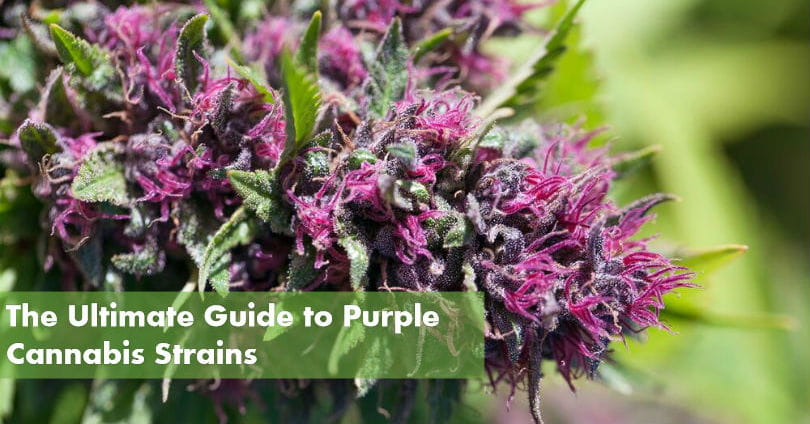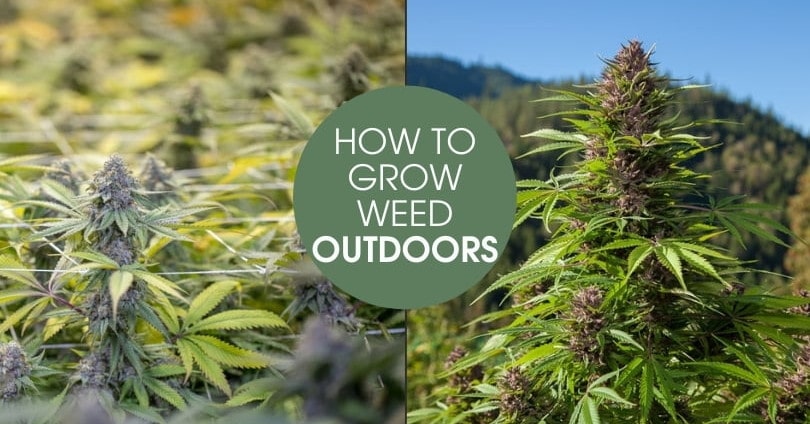 Nutrient meters, such as EC, PPM, or TDS meters, are essential in monitoring nutrient levels when growing weed in hydroponics.
Nutrient meters, such as EC, PPM, or TDS meters, are essential in monitoring nutrient levels when growing weed in hydroponics.
Since all of your decisions will be based on the nutrient readings on the meter, you must understand how to calibrate and use a nutrient pen properly.
Once your nutrient pen is calibrated, you can follow our EC or PPM chart that we’ll provide below to help you grow the best and biggest buds possible.
Read along to learn how to calibrate and use your nutrient meter in a handful of easy-to-follow steps. Once you finish this guide, you’ll be ready to feed your marijuana plants the perfect dose — every time.
Let’s begin!
How To Calibrate a Nutrient Meter in Three Easy Steps
Before we teach you how to calibrate nutrient meters, let’s quickly list the different types of available nutrient meters.
- EC meter
- PPM/TDS meter
- Combo EC/PPM/TDS meter
As you can see, there are a multitude of nutrient meters, which means there are many calibration methods. We’ll discuss how to calibrate a combo nutrient meter to cover all our bases for simplicity’s sake.
Here’s what you’ll need to begin the calibration process:
- A nutrient meter
- EC or TDS calibration solution
- Gloves
- Protective eyewear
- Glass measurement container (Pyrex)
Once you’ve gathered your supplies, organize everything in a clean workspace and follow each step.

Different types of EC meters you’ll find on the market. Some are a combination that include both pH and EC.
Step One: Enter Calibration Mode
First, power on the nutrient meter.
Depending on the make or model, you must find the “mode” or “cal” option. Use the manufacturer’s instructions to find the calibration mode.
Once found, enter calibration mode.
Step Two: Prepare Standards
To calibrate EC, pour EC calibration solution (1413 μs/cm) into the Pyrex container. If using a combo nutrient meter, make sure you’re in the EC calibration setting.
To calibrate TDS, pour TDS calibration solution (1382 PPM TDS) into a Pyrex container. If using a combo nutrient meter, make sure you’re in the TDS/PPM calibration setting.

Pour your EC/TDS standard solution into a container.
Step Three: Calibrate Using Standards

Dip the meter into the EC or TDS solution (depending on which measurement you’re trying to calibrate).
Once the nutrient meter reads 1413 μs/cm or 1382 TDS/PPM — success!
You’ve officially calibrated your nutrient meter to the EC or TDS standard. Now, your nutrient pen is ready for use.
Three Ways To Use A Nutrient Meter
Now that your nutrient meter is ready for action — it’s time to learn how to use it.
As you learned in our previous guide, Why You Need to Use a Nutrient Meter, there’s nothing more powerful than knowing what you’re feeding your marijuana plants.
Now, let’s take a look at how you can use your nutrient meter to maximize your cannabis crop with the click of a button.
Fine-Tune The Nutrient Solution
One of the best ways to use a nutrient meter is to fine-tune the nutrient solution.
When growing weed in hydroponics or soilless media, it pays to know what’s going in and out. Therefore, nutrient meters give you a clear picture of how much nutrient (or better yet, salt) your marijuana plants receive.
Here’s a breakdown of an EC/TDS/PPM feed chart that you can follow for the optimal results when growing weed in hydroponics.
Feeding Schedule For Cannabis Seedlings
- EC: 0.7-0.8
- TDS/PPM: 350-400
Feeding Schedule For Young Cannabis Plants
- EC: 1.0-1.2
- TDS/PPM: 400-500
Feeding Schedule For Medium-Sized Vegetative Cannabis Plants
- EC: 1.5-1.7
- TDS/PPM: 600-750
Feeding Schedule For Large Vegetative Cannabis Plants
- EC: 1.8-1.9
- TDS/PPM: 750-900
Feeding Schedule For Flowering Cannabis Plants (Weeks 1-2)
- EC: 1.9-2.0
- TDS/PPM: 900-950
Feeding Schedule For Flowering Cannabis Plants (Weeks 3-4)
- EC: 2.1-2.2
- TDS/PPM: 950-1,050
Feeding Schedule For Flowering Cannabis Plants (Weeks 5-6)
- EC: 2.2-2.3
- TDS/PPM: 1,050-1,100
Feeding Schedule For Flowering Cannabis Plants (Weeks 7-8)
- EC: 2.3-2.4
- TDS/PPM: 1,100-1,150
Flush Schedule For Cannabis Plants (Final Week of Flowering)
- EC: 0.0-0.8
- TDS/PPM: 0-400
Remember, all cannabis strains are different, and you will need to tweak this schedule to fit your cannabis crop’s needs. In other words, the feed range above is a general outline.
Whether you use Advanced Nutrients or General Hydroponics — you can always rely on a nutrient meter to provide you objective readings that you can follow with confidence.
Diagnose or Prevent Nutrient-Related Problems
Another massive advantage to owning a nutrient meter is its ability to diagnose or prevent nutrient-related problems.
For example:
We noticed that the leaves on our feminized Girl Scout Cookies were turning yellow, and the plant wasn’t growing as fast as we’d hoped.
Instead of throwing more or fewer nutrients at it, we decided to bust out our handy nutrient meter. Once we mixed the usual nutrient mix (750ppm), we over-watered the plant to generate runoff.
We collected the runoff and tested it with our nutrient pen.
The results? The runoff shows a value of 500ppm. In this case, we just proved that our GSC is being under-fed by roughly 250ppm — yikes!
Therefore, we need to bump up the subsequent feedings to 1,000ppm (750 + 250) to avoid nutrient deficiencies and related problems.
Now that we’ve bumped up the feeding, our Girl Scout Cookies are back to their green selves and looking ready for the flowering stage.

Don’t underfeed your cannabis plants or else they might start having deficiencies.
Check The Quality of Your Water
Ever hear of the saying, quality in — quality out?
Well, it goes without saying that your water quality matters. By using a nutrient pen, you can check the quality of your water and decide if it’s usable or not.
Remember, high EC or PPM/TDS values in your tap water means it’s contaminated and not recommended for irrigating your cannabis plants (let alone drinking it yourself).
Ideal EC Level For Irrigating Marijuana Plants
- 0.0-0.7 μs/cm
Ideal TDS/PPM Level For Irrigating Marijuana
- 0-300ppm
At the levels mentioned above, you can rest assured that your water quality is adequate. Anything above these levels, you may want to consider using filtered or RO water.
Always Use a Nutrient Meter For The Best Results
Never grow cannabis in hydroponics or soilless media without a calibrated nutrient meter.
Nutrient meters, like pH meters, are essential tools when growing weed. Without a nutrient meter, you’ll be left in the dark to fend for your marijuana plant’s wellbeing.
By using this guide, you’re one step closer to growing the best weed of your life.



